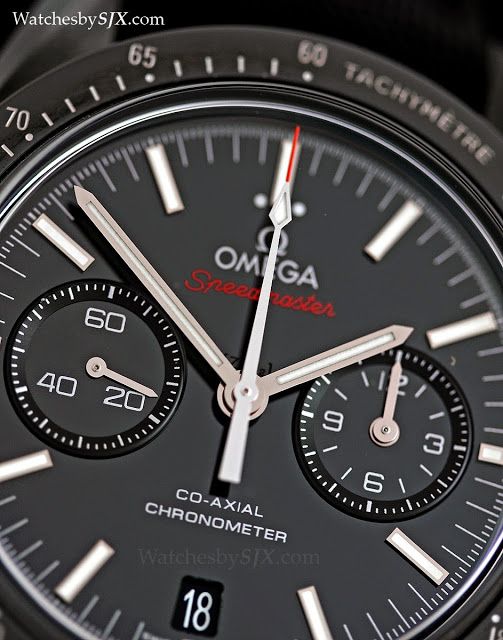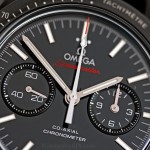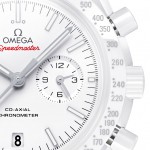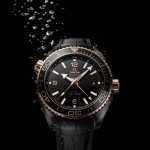The particular type of ceramic used for the Speedmaster Dark Side of the Moon is zirconium dioxide (ZrO2). Though the case is ceramic, it is finished just like a metal alloy case, with both polished and brushed surfaces. And the dial is made from the same material, but is mirror finished, resulting in a deep, glossy black.
-(11).jpg)
These photos from Omega illustrate the step-by-step processes necessary to make each of the ceramic components of the Dark Side of the Moon.
Case production
.jpg) |
| The process starts with raw zirconium dioxide pellets |
.jpg) |
| The large disc-shaped initial case form is then sintered: baked in several stages inside an oven at 1400 degrees Celsius, shrinking it to the correct size |
.jpg) |
| The case is then milled with diamond-tipped tools to create the case details |
.jpg) |
| Subsequently it is tumble polished with alumina granules |
.jpg) |
| A polishing wheel with diamond paste is then used to get the brushed finish on the case side and lugs |
.jpg) |
| Finally each case is inspected manually |
.jpg) |
| The bezel, produced in a process just like the case, is also laser engraved with the tachymetre scale; the same is done for the case back |
.jpg) |
| The engraved text on the bezel and back is then metallised, giving it a silver tone which contrasts with the black ceramic |
.jpg)
Dial production
.jpg) |
| The dial is made of a thin ceramic plate which has to be the exact same shade of black as the ceramic case |
.jpg) |
| The ink for the dial printing is transferred into an image carrier |
.jpg) |
| The tampon picks up the ink and prints it on the dial |
.jpg) |
| The 18k white gold indices are attached by hand |
.jpg) |
| Each index is then filled with Super Luminova by hand, using a small syringe-like device |
Remember to check out our hands-on with the Speedmaster Dark Side of the Moon for close-ups of the timepiece.
Back to top.
-(11).jpg)
.jpg)
.jpg)
.jpg)
.jpg)
.jpg)
.jpg)
.jpg)
.jpg)
.jpg)
.jpg)
.jpg)
.jpg)
.jpg)
.jpg)








